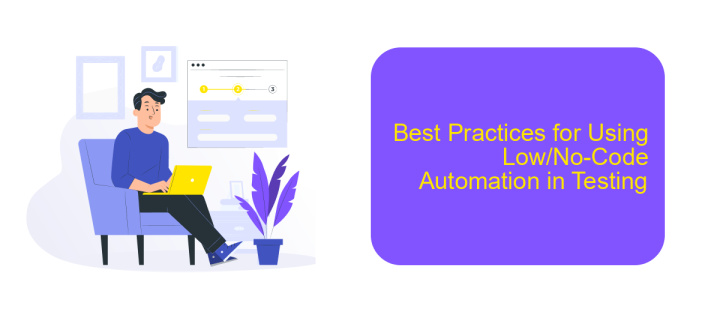Low/No-code Automation in Testing
Low/No-code automation in testing is revolutionizing the software development landscape. By enabling testers to create and execute automated tests without extensive programming knowledge, these platforms significantly reduce the technical barrier to entry. This democratization of testing not only accelerates the development cycle but also enhances collaboration between technical and non-technical team members, ensuring more robust and reliable software products.
Introduction to Low/No-Code Automation in Testing
Low/No-code automation in testing is revolutionizing the software development landscape by enabling non-technical users to create and manage automated tests. This approach minimizes the need for extensive coding knowledge, making it accessible to a broader audience and enhancing collaboration between teams.
- Reduces dependency on specialized developers
- Speeds up the testing process
- Facilitates easier integration with various tools and platforms
- Enhances collaboration across different teams
Tools like ApiX-Drive further simplify the process by providing seamless integration options, allowing testers to connect different applications without writing a single line of code. This not only accelerates the automation process but also ensures a more robust and reliable testing environment. As a result, organizations can achieve higher efficiency and better quality in their software development lifecycle.
Benefits of Low/No-Code Automation for Testing

Low/No-code automation in testing significantly reduces the barrier to entry for individuals who may not possess extensive programming skills. This democratization of test automation allows a broader range of team members to participate in the testing process, fostering greater collaboration and efficiency. By enabling testers, business analysts, and other stakeholders to create and execute tests without writing code, organizations can accelerate their testing cycles and improve time-to-market for their products.
Moreover, integrating low/no-code automation tools with other services can further enhance their capabilities. For instance, ApiX-Drive offers seamless integration options that allow users to connect various applications and automate workflows without the need for complex programming. This not only simplifies the process of setting up and maintaining integrations but also ensures that the testing environment remains synchronized with other critical business systems. As a result, teams can focus on delivering high-quality software while minimizing the overhead associated with traditional testing approaches.
Challenges and Limitations of Low/No-Code Automation in Testing

Low/No-code automation in testing offers many advantages, but it also comes with its set of challenges and limitations. These platforms aim to simplify the testing process, yet they can sometimes fall short in complex scenarios.
- Limited Customization: These tools often lack the flexibility to handle highly specific or complex test cases, which may require custom scripting.
- Scalability Issues: As projects grow, maintaining and scaling tests can become cumbersome, especially when dealing with large datasets or multiple integrations.
- Integration Challenges: Integrating with other tools and services can be difficult. For example, while services like ApiX-Drive can facilitate integrations, setting them up might still require some technical expertise.
- Performance Constraints: Low/No-code platforms may not be optimized for performance testing, limiting their effectiveness in identifying bottlenecks.
- Learning Curve: Despite being marketed as user-friendly, there is often a learning curve involved in mastering these tools.
While Low/No-code automation tools can significantly streamline the testing process, they are not a one-size-fits-all solution. Organizations must carefully evaluate their specific needs and limitations before fully committing to these platforms.
Best Practices for Using Low/No-Code Automation in Testing

When implementing low/no-code automation in testing, it's essential to follow best practices to ensure efficiency and reliability. First, clearly define your testing objectives and identify the processes that can benefit most from automation. This will help you prioritize and allocate resources effectively.
Next, choose the right tools that align with your team's skill set and project requirements. Evaluate various low/no-code platforms and select one that offers ease of use, robust features, and scalability. Tools like ApiX-Drive can simplify integration processes, enabling seamless data flow between different systems without the need for extensive coding.
- Start small and scale gradually: Begin with automating simple tasks and progressively move to more complex scenarios.
- Maintain documentation: Keep detailed records of automated tests and workflows to ensure transparency and facilitate troubleshooting.
- Regularly update and review: Continuously monitor and update your automated tests to adapt to changing requirements and environments.
- Foster collaboration: Encourage collaboration between technical and non-technical team members to leverage diverse perspectives and expertise.
By adhering to these best practices, you can maximize the benefits of low/no-code automation in testing, leading to more efficient workflows, reduced errors, and faster time-to-market. Remember, the goal is to enhance productivity while maintaining high-quality standards.
- Automate the work of an online store or landing
- Empower through integration
- Don't spend money on programmers and integrators
- Save time by automating routine tasks
Future of Low/No-Code Automation in Testing
The future of low/no-code automation in testing is promising, as it democratizes the testing process, making it accessible to non-technical team members. This shift allows businesses to accelerate their development cycles, reduce costs, and improve overall software quality. By leveraging intuitive interfaces and pre-built templates, teams can quickly create and execute tests without deep programming knowledge, fostering a more collaborative environment where everyone can contribute to the quality assurance process.
As the ecosystem of low/no-code tools continues to expand, integration capabilities will become increasingly important. Services like ApiX-Drive facilitate seamless integration between various applications and testing tools, enabling automated workflows and data synchronization. This not only enhances the efficiency of the testing process but also ensures that all stakeholders have real-time access to critical information. Looking ahead, we can expect further advancements in AI-driven test generation and analysis, making low/no-code solutions even more powerful and indispensable in the software development lifecycle.
FAQ
What is Low/No-code Automation in Testing?
What are the benefits of using Low/No-code Automation in Testing?
Can Low/No-code Automation in Testing be integrated with existing CI/CD pipelines?
How do I get started with Low/No-code Automation in Testing?
Are there any limitations to Low/No-code Automation in Testing?
Apix-Drive will help optimize business processes, save you from a lot of routine tasks and unnecessary costs for automation, attracting additional specialists. Try setting up a free test connection with ApiX-Drive and see for yourself. Now you have to think about where to invest the freed time and money!


